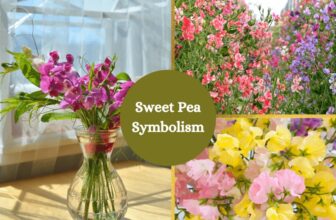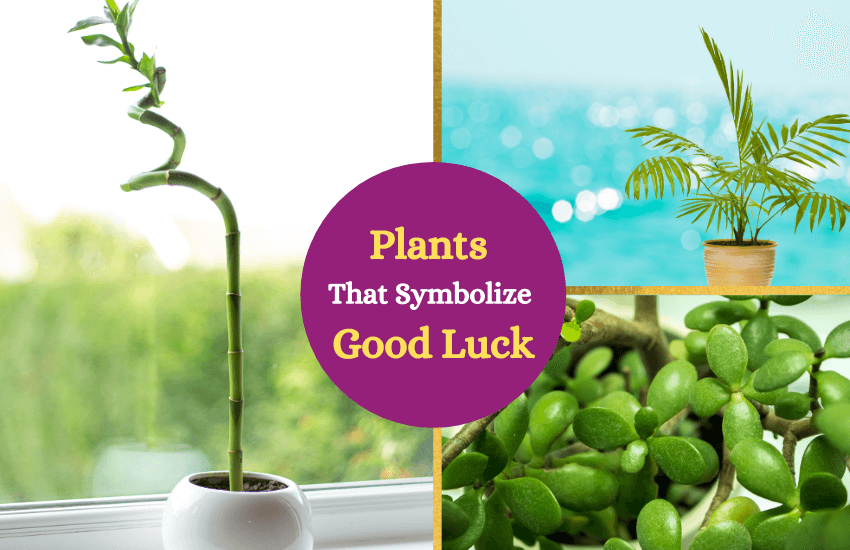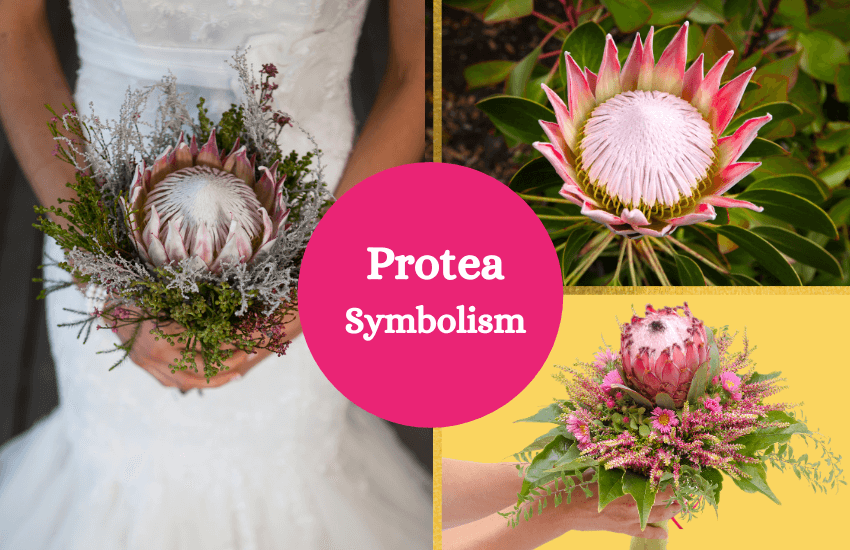
Table of Contents
Vibrant and unique, proteas are loved for their distinctive artichoke-like shape, adding an exotic touch to gardens and floral decorations These flowers can be seen in a multitude of shapes and colors. Here’s what to know about their most popular varieties and their significant today.
What Are Proteas?
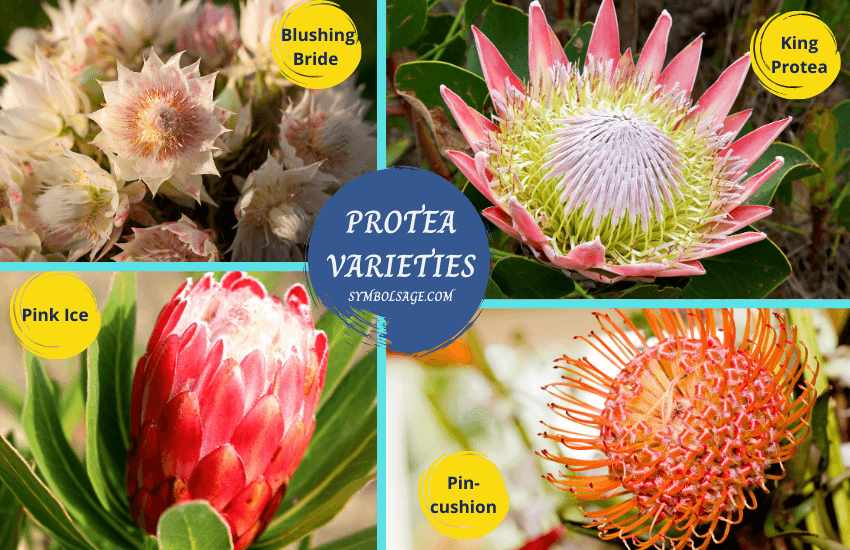
Native to South Africa, proteas are the showy flowers of the Proteaceae family. They’re sometimes called sugarbushes due to their sweet nectar. Certain varieties, especially the Protea cynaroides, are grown in Australia and Hawaii. This is also the most popular kind, bearing the largest flower of about 5 to 12 inches in diameter.
There are several types of proteas, including:
- True Proteas: The true proteas are from the Protea genus. Instead of petals, they have bright pink bracts or leaf-like structures around tiny tube-like flowers. While the king proteas have spiky petal-like bracts, the queen proteas have a more delicate, goblet-shaped appearance.
- Pincushion Proteas: The pincushion protea looks more of exploding fireworks or an exotic sea creature with its thread-like tendrils. It looks like it has many thin pins sticking out from it, hence the name. Its botanical name L. cordifolium is derived from Greek, which translates to white seed and heart shaped blooms. This exotic flower comes in red, orange and pale brownish yellow color.
- Blushing Bride: This variety of the Serruria genus boasts its delicate, star-shaped flowers with pale pink eyes and ivory white petals, which contrasts with the strong and striking appearance of the king proteas. Since these blooms are native to tropical and subtropical regions, they’re drought-tolerant, though some varieties can be front tolerant too.
In African grasslands and savannas, wildfires are common. These flowers are made to survive them—thanks to their thick bark that protect the buds. Triggered by the heat, proteas grow again after the fire passes. It’s also said that their roots allow them to thrive in soil that isn’t rich in nutrients.
In 1735, Swedish botanist Carl Linnaeus named the flower after the Greek god Proteus. It became a popular ornamental plant and was grown for aesthetics.
Myths and Stories about the Protea Flower
The name protea was inspired by Greek mythology. The son of the sea-god Poseidon, Proteus was known for his wisdom. He knew all things, from past to present and future, but he didn’t want to share his knowledge with others. To avoid being caught by those seeking his insights, he would change his shape and escape. The protea was named after him, due to its many shapes and colors.
It’s also believed that the Proteaceae plant family was one of the oldest groups of flowers found in the Gondwana—the half region of the Pangaea supercontinent—millions of years ago. It eventually split into smaller continents, and the flowers spread to different regions, including Africa, South America and Australia.
Meaning and Symbolism of the Protea Flower
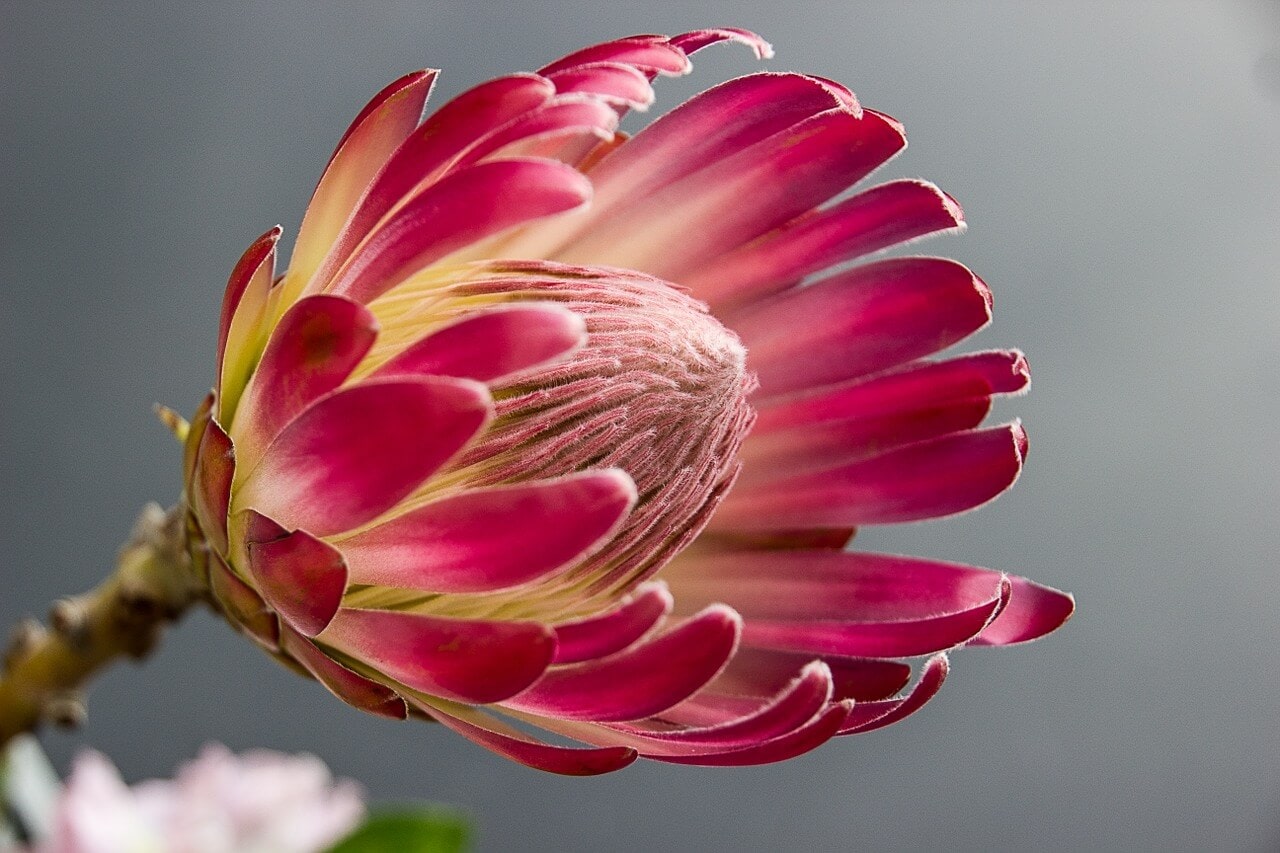
As one of the most ancient flowers, it’s not surprising that proteas have gained symbolic meanings throughout history. Here are some of them:
- A Symbol of Longevity – It’s said that these blooms date back to around 300 million years, making them among the oldest flowers we know. This associates the protea with longevity and long life.
- A Representation of Diversity – Named after a Greek god with chameleon-like capabilities, it’s no wonder that the flower symbolizes diversity. It’s also associated with cultural harmony and embracing one’s uniqueness. After all, this beautiful bloom is unique in so many ways, and can be found in multitude of colors and shapes.
- Change and Transformation – In African culture, these flowers represent metamorphosis and transformation.
- Resilience and Courage – The fact that proteas have existed for so long and that they can withstand the toughest of weather conditions—even wildfires, make them the perfect symbol for strength, resilience and courage. s
- Beauty and Individuality – In some contexts, they also represent beauty, which is fitting for their exotic and unique appearance. When placed next to other beautiful flowers, proteas will surely stand out in any arrangement.
Uses of the Protea Flower Throughout History
- In Medicine
Disclaimer
In the early 1800s, the nectar of the protea flower used to be made into medicinal syrup, called bossiestroop, for relieving cough and other chest disorders. In fact, it became an essential item in medicine chests. Also, the nectar was used as an alternative to sugar and as a natural sweetener for diabetes, which was described by many as having a fruity and honey-like taste. Certain varieties of proteas were also utilized for treating stomach ulcers and diarrhea.
- In Industrial Uses
The stems of the protea plant were used as charcoal and firewood, as well as for making furniture and other tools. Some even utilized the seedpods as foot rasps for scraping off foot calluses.
- As Emblems and National Flower
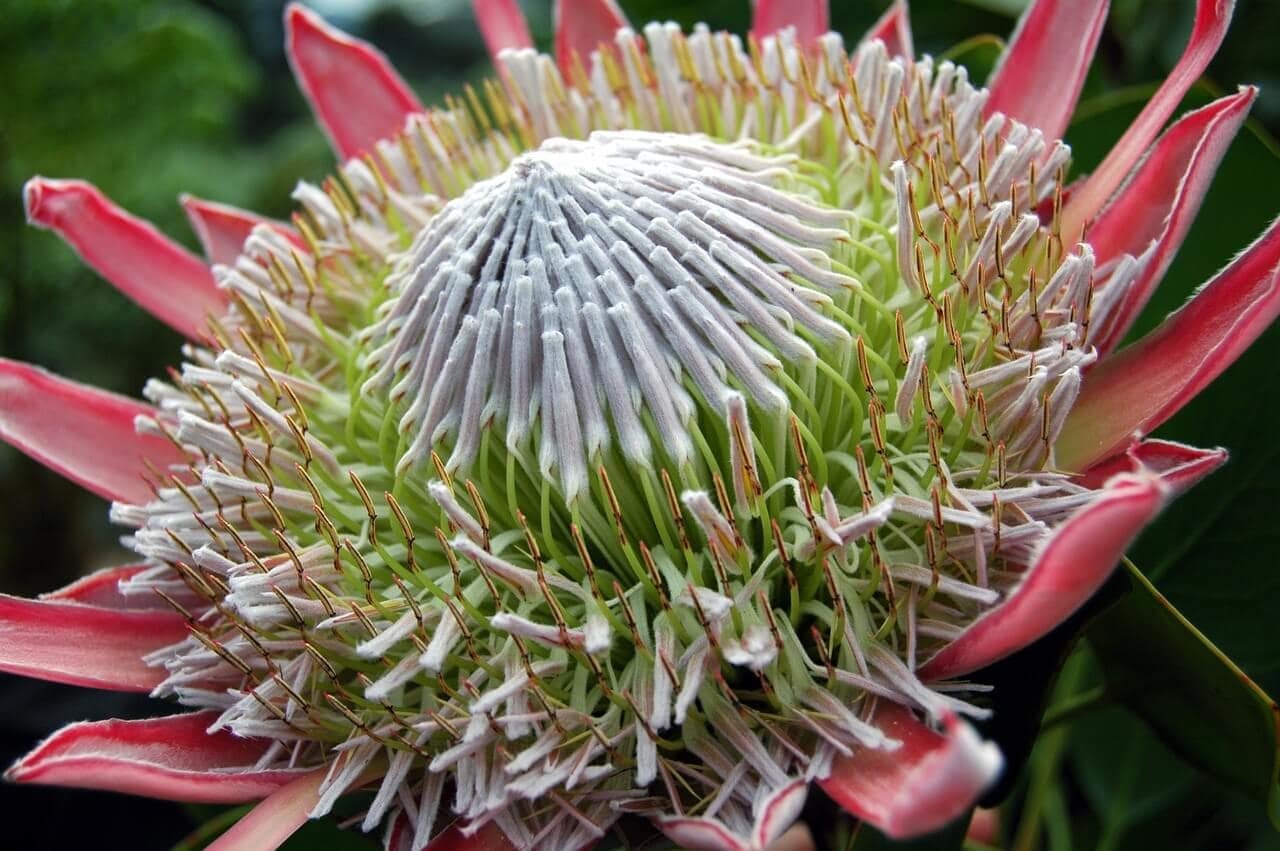
It’s not surprising that the king protea is the national flower of South Africa. Apart from being abundant in the region, the flower also has a resemblance to a crown, making it ideal in emblems. Nowadays, proteas can be seen everywhere in South Africa, from passports to birth certificates and coins.
In South African coat of arms, the bloom signifies the beauty of their land and pursuit of African Renaissance. Also, it’s the logo of the Protea Atlas Project in Cape Town, which promotes awareness in botany.
The Protea Flower in Use Today
The unique beauty of these flowers makes them highlights in the gardens, bringing a tropical beach holiday to your home. If you want to add some exotic touch indoors, place proteas on terrariums, vases, bowls and glasses. Complete the tropical theme with some succulents and large leaves.
In weddings, proteas make a great focal point for centerpieces, adding a pop of color, texture and personality to the arrangement. Larger varieties can be used as a single flower in a simple posy, while smaller ‘Pink Ice’ varieties are perfect for colorful and monochromatic bouquets.
If you want something more delicate and romantic, think of ‘Blushing Bride’ proteas for your posies, corsages and boutonnieres. For rustic weddings, proteas are best paired with eucalyptus and other wildflowers.
When to Give Protea Flowers
- Christmas: In South Africa, it’s a tradition during Christmas holidays to give protea flowers to loved ones. Apart from fresh bouquets, dried floral arrangements are a festive gift too.
- Mother’s Day: The beautiful Queen Protea can be a romantic way to tell your spouse that she’s the queen of your heart.
- Father’s Day: On the other hand, the King Proteas are perfect for Father’s Day, along with other blooms that convey masculinity.
- To Express Encouragement: Since they represent courage, these flowers are best given to those who need a bit of encouragement, as well as those who are suffering from the loss of a loved one, or from broken relationships and rejections.
- Birthdays: When given on birthdays, the bloom can inspire celebrants to embrace transformation and change in their lives.
- Other Events: A great thing, proteas are perfect for every occasion, including graduations and job promotions.
In Brief
Proteas aren’t just colorful and exotic—they’re symbols of beauty and courage too. From firework-like blooms to artichoke and goblet-shaped varieties, proteas will surely bring a touch of the tropics to your home.





